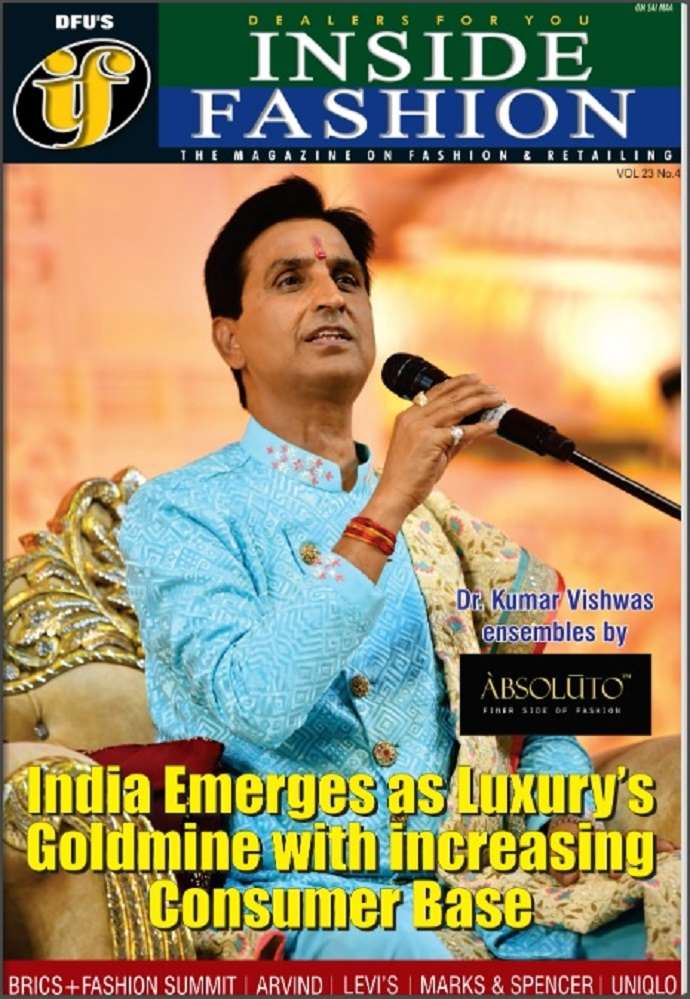Time to Lead, Not Follow: Textile industry must become a national priority, says Kulin Lalbhai

23 July, Mumbai 2025
In a visionary address at the Textile Leaders’ Conclave 2025 in Ahmedabad, Kulin Lalbhai, Vice Chairman of Arvind Ltd., called for the Indian textile sector to be declared a ‘national priority’—an urgent imperative, he argued, for India to emerge as a global powerhouse in the textile and apparel value chain.
His speech underscored an important moment for the industry, urging stakeholders, policymakers, and entrepreneurs alike to “not just participate in, but lead the global textile game.”
The conclave, jointly hosted by JITO Ahmedabad and CII Gujarat, brought together leading textile industrialists, policymakers, investors, and supply chain experts to discuss strategies for strengthening India’s global competitiveness in textiles. Against the backdrop of evolving global sourcing patterns and a bullish domestic market, Lalbhai’s address worked as a rallying cry for transformational change.
Domestic demand meets global realignment
Lalbhai said, India is witnessing a rare convergence of macroeconomic tailwinds: growing domestic consumption, favorable global demand reallocation, and strong government backing through Production Linked Incentive (PLI) schemes, infrastructure investments, and FTAs with markets like the UAE and Australia.
These elements, he said, form the perfect springboard for India to seize global leadership in textiles—a $1.4 trillion industry currently led by China but increasingly open to realignment due to geopolitical shifts and rising ESG compliance costs.
Join our group
“This is a golden window—perhaps a once-in-a-generation opportunity,” Lalbhai said. “We must respond with scale, speed, and vision.”
Gujarat at the helm, from cotton yarn to fashion capital
Lalbhai positioned Gujarat—India’s largest cotton-producing and textile-exporting state—as the nucleus of this transformation. Traditionally known for spinning and yarn, the state must now focus aggressively toward value-added segments such as apparel, technical textiles, and fashion-led exports.
“Gujarat is poised to be the engine of India’s textile leap, but we must go beyond volume to value,” he noted, stressing the need for vertically integrated supply chains, state-of-the-art garmenting parks, and research-backed product innovation.
Three pillars for India’s textile rise
Lalbhai’s blueprint for global competitiveness was centered around three imperatives, all aligned with India’s broader developmental vision of Viksit Bharat@2047.
Massive expansion of garmenting capacity: India must move beyond raw material and fabric exports to become a major exporter of finished garments. Lalbhai emphasized the need for large-scale, globally compliant apparel clusters with plug-and-play infrastructure, skilled labor, and digitized production lines.
Increased adoption of Man-Made Fibres (MMF): With global fashion brands increasingly favoring MMF-based apparel due to durability and circularity concerns, India must diversify beyond cotton. “If we want to be relevant in global markets, cotton alone won’t cut it,” Lalbhai said, calling for balanced incentives and ecosystem development for polyester, viscose, and recycled fibres.
Speed and sustainability as core competencies: “Lead times and lifecycle impact will define winners,” Lalbhai stated. He advocated for nearshoring garment hubs, fast digital sampling, and green technologies such as waterless dyeing and renewable-powered plants. Sustainability, he argued, must be seen not as compliance, but as a competitive advantage.
A new textile vision
A central theme of Lalbhai’s address was inspiring the next generation to see textiles not as a legacy sector, but as a sunrise industry. “The future belongs to dreamers,” he said, calling on youth to reimagine textiles through design, tech, and entrepreneurship.
He also advocated for decentralizing manufacturing beyond traditional clusters like Tiruppur and Ludhiana. Smaller cities across UP, Odisha, MP and Assam offer untapped potential for employment, local entrepreneurship, and inclusive growth. “A national textile vision must be pan-India in spirit,” Lalbhai stressed.
Making textiles a national mission
As the Textile Leaders’ Conclave concluded, Lalbhai’s speech echoed as a call for collective ambition. For India to capture a greater share of the global textile trade—currently just 4 per cent compared to China’s 33 per cent—it must overcome structural inefficiencies, skill shortages, and fragmented value chains. Lalbhai’s message was clear: “India’s textile sector must be treated as a strategic lever of economic and geopolitical influence. Let’s elevate it to the level of national priority.” With coordinated investments, policy clarity, and innovation at scale, India has the potential not just to lead but to reshape the global textile map.
Thus as India eyes its centenary in 2047, the textile sector stands at a strategic inflection point. The roadmap outlined by Lalbhai offers not just a business plan, but a national mission—to reclaim India’s historical stature as a global textile innovator, employer, and exporter. The question now is whether the nation will rise to the moment with the urgency, unity, and scale it demands.
























